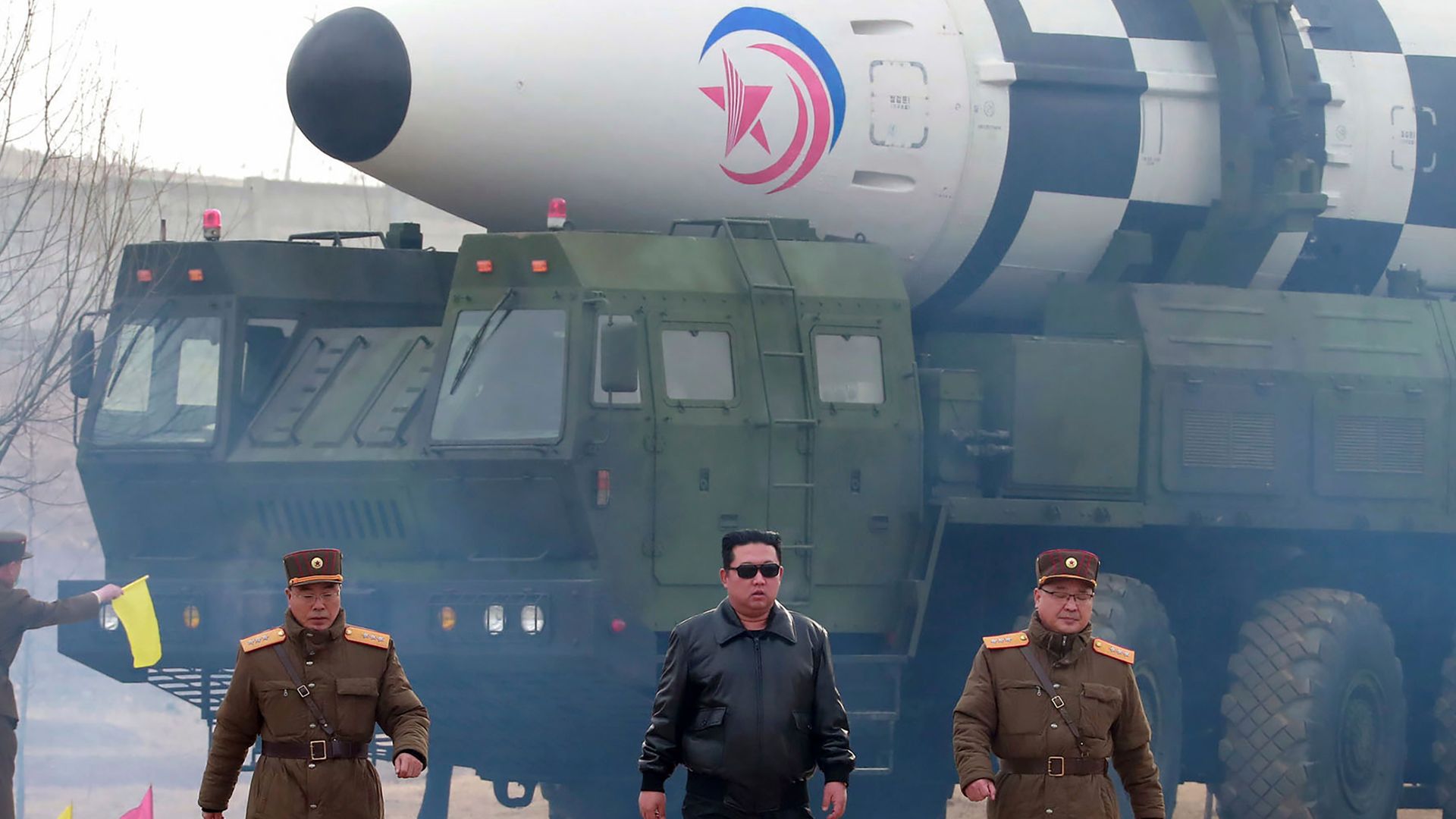
NORTH KOREA CAN PROBABLY HIT THE CONTINENTAL UNITED STATES WITH ITS NEW HWASONG-19 INTERCONTINENTAL BALLISTIC MISSILE. BUT THE COMMANDER OVERSEEING THE UNITED STATES’ JOINT-GLOBAL STRIKE OPERATIONS SAYS IF NORTH KOREA EVER TRIED IT, THE U.S. RESPONSE WOULD BE ‘OVERWHELMING.’
NORTH KOREA RECENTLY COMPLETED ANOTHER TEST LAUNCH OF ITS HWASONG-19 IN NOVEMBER. THE MISSILE FLEW HIGHER THAN ANY OTHER MISSILE PREVIOUSLY LAUNCHED BY THE KIM REGIME. WHICH IS SAYING SOMETHING SINCE THE KIM REGIME LAUNCHES A LOT OF ROCKETS AND MISSILES. THE REGIME ALSO OWNS AROUND 50 NUCLEAR WARHEADS AND HAS ENOUGH FISSILE MATERIAL TO MAKE ANOTHER 90.
A NUCLEAR ARMED NORTH KOREA WITH THE ABILITY TO HIT THE U.S. IS CERTAINLY CONCERNING FOR AMERICANS, BUT IT’S ALSO CONCERNING TO AMERICA’S ALLIES IN THE PACIFIC. AT A NUCLEAR DETERRENCE AND READINESS SYMPOSIUM HOSTED BY THE KOREA SOCIETY, UNITED STATES AIR FORCE MAJOR GENERAL JASON ARMAGOST WAS ASKED IF NORTH KOREA’S NEW ABILITIES WOULD FORCE THE U.S. TO PRIORITIZE HOMELAND DEFENSE OVER DEFENDING ALLIES WITH ITS NUCLEAR TRIAD.
Armagost
North Korea; it is problematic for them to have an ICBM. But for them to attack that system is inherently–with current and imaginable capabilities–it is extremely difficult to attack that system of systems. So, what that system allows us to do is to say that the use of an ICBM would not result in the benefit that you are seeking. Because we can respond in a way that is overwhelming, in a time and place of our choosing.
THE SYSTEM OF SYSTEMS THAT MAKE UP THE U.S. NUCLEAR TRIAD IS THE MOST POWERFUL STRATEGIC DETERRENCE ON THE PLANET, AND THE U.S. OFFERS THAT PROTECTION AND EXTENDED DETERRENCE TO ITS ALLIES IN THE PACIFIC. NAMELY SOUTH KOREA, JAPAN, AND AUSTRALIA.
THE UNITED STATES CURRENTLY HAS 1,770 NUCLEAR WARHEADS DEPLOYED, AND A COUPLE HUNDRED MORE THAN THAT IN STORAGE. ARMAGOST SAYS BY DEPLOYING THOSE WEAPONS WITHIN THE NUCLEAR TRIAD, THE U.S. IS CREATING A SPECTRUM OF CAPABILITY FOR STRATEGIC DETERRENCE.
THE TRIAD INCLUDES BOMBERS, STEALTH OR OTHERWISE, WHICH CAN BE FORWARD DEPLOYED. THE U.S. OPERATES 400 SILOS FILLED WITH NUCLEAR-ARMED MINUTEMEN III INTERCONTINENAL BALLISTIC MISSILES IN COLORADO, WYOMING, NORTH DAKOTA AND MONTANA. THE AIR FORCE TESTS THOSE MISSILES SOMEWHAT REGULARLY TO MAKE SURE THEY’RE ALWAYS READY. AND THE DEPARTMENT OF DEFENSE IS WELL UNDERWAY WITH ITS MODERNIZATION PROGRAM TO REPLACE THE MINUTEMEN III WITH THE NEW SENTENEL ICBM.
AND OF COURSE, THERE’S THE NAVY’S SILENT SERVICE. NUCLEAR POWERED AND ARMED SUBMARINES, CAPABLE OF LAUNCHING BALLISTIC MISSILES FOR WHAT ARMAGOST CALLS ‘AN ASSURED SECOND-STRIKE CAPABILITY.’ AND SUB-LAUNCHED BALLISTIC MISSILES CAN BE LAUNCHED FROM ALMOST ANYWHERE ON THE PLANET THAT A SUBMARINE CAN GO.
BUT IDEALLY, THOSE NUCLEAR DEVICES WILL NEVER BE FIRED, AND CONVENTIONAL WEAPONS CAN ALSO BE A DETERRENCE. AS WE REPORTED ON BEFORE, THE U.S. HAS ENOUGH CONVENTIONAL WEAPONS TO POTENTIALLY TAKE OUT ALL OF CHINA AND RUSSIA’S NUCLEAR FACILITIES IN A MATTER OF HOURS. SO, THE MUCH SMALLER NORTH KOREAN PROGRAM, WHILE CONCERNING, DOESN’T PRESENT SO MUCH OF A DILEMMA THAT IT CAN’T BE DEALT WITH USING CONVENTIONAL MEANS.
FOR MORE UNBIASED, STRAIGHT FACT REPORTING LIKE THIS, DOWNLOAD THE STRAIGHT ARROW NEWS APP TODAY.











